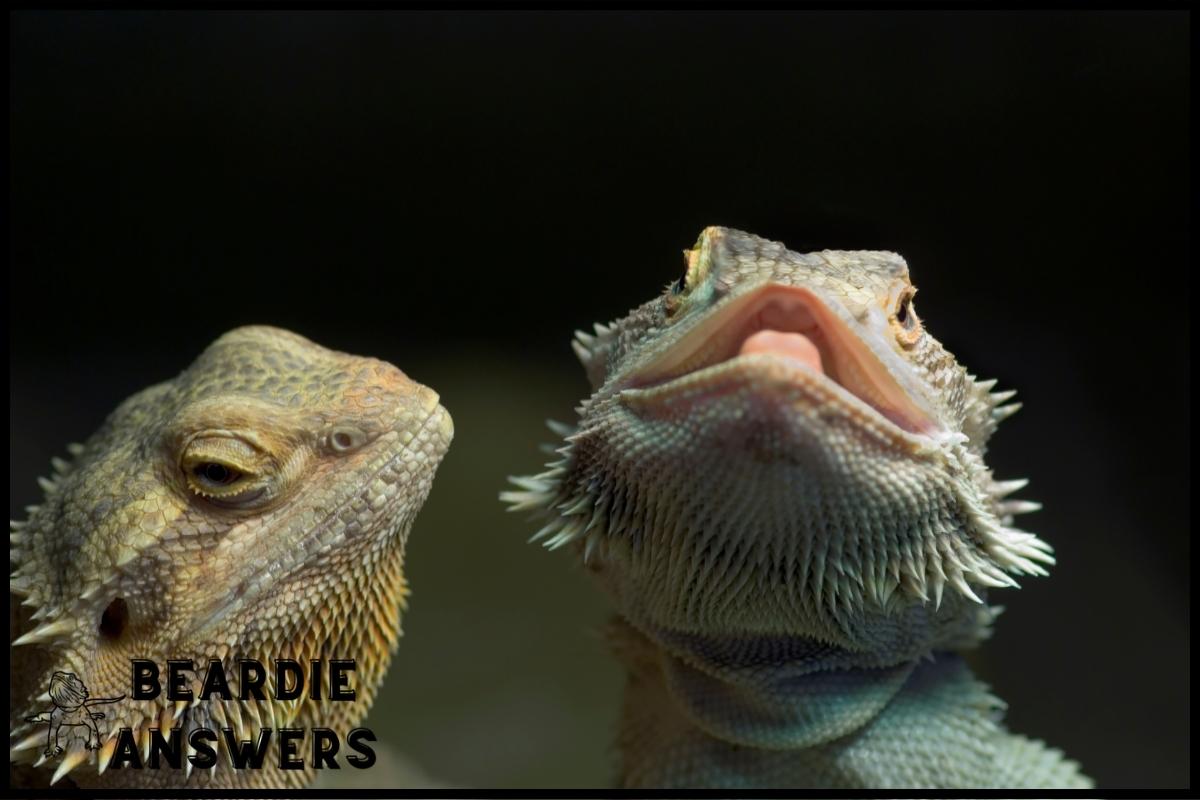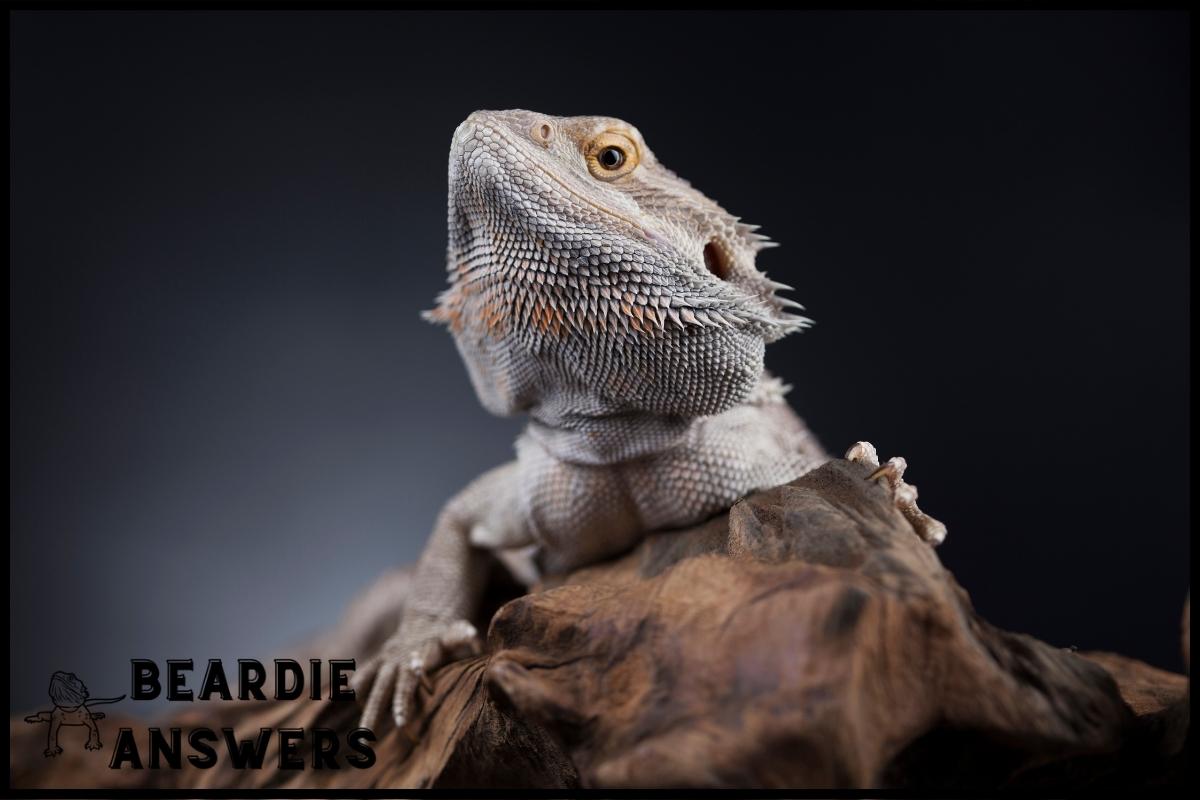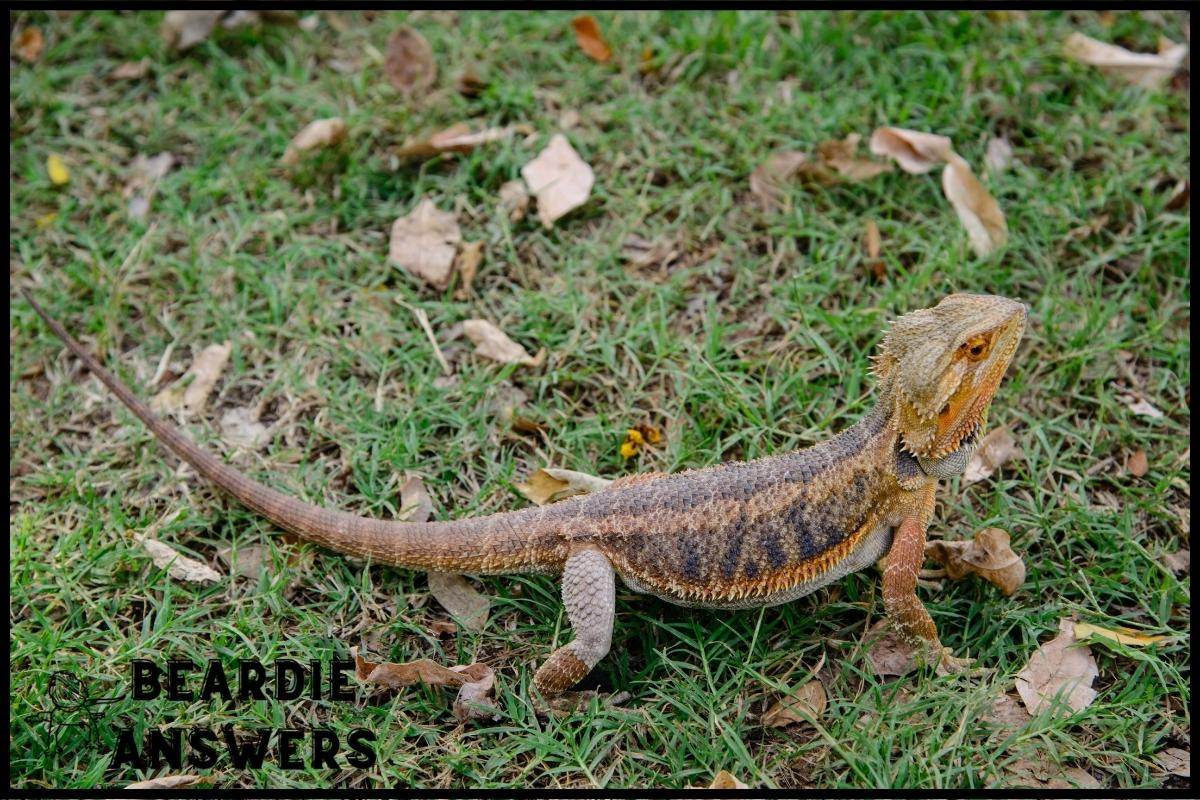To feed a bearded dragon, offer a variety of appropriately sized insects, such as crickets, mealworms, and waxworms, as well as vegetables such as collard greens, kale, and carrots. Fruits, including strawberries and apples, can be offered as an occasional treat. It is important to ensure that the food is appropriately sized and prepared to prevent choking hazards and other health problems.
What You'll Learn
Understanding The Nutritional Needs Of Your Bearded Dragon
Feeding a bearded dragon is an essential part of ensuring your pet’s health and happiness. It is like the foundation for building a beautiful home: if you don’t get it right, everything else will suffer as a result.
Setting up the habitat and supplementing the diet are two key steps in making sure your beardie gets all the nutrition they need to thrive. When setting up their new home, make sure that you provide plenty of basking areas, hiding places, clean water dishes and enough space for them to exercise. A heat lamp should also be used to regulate temperature levels during both day and night time hours. This mimics natural conditions found in their native environment which will help keep them healthy and happy.
Once this setup is complete, you can start thinking about what food to offer your bearded dragon – insects being at the top of the list! Insects should form the basis of their diet but some vegetables and fruits can also be included as supplements occasionally. Be careful though not to overfeed or feed too large portions; always ensure that whatever you give your beardie is small enough for them to swallow easily without choking or indigestion risks.
With appropriate amounts of quality food, you can rest assured knowing that your furry friend will be well-fed and content!
Choosing The Right Foods
When feeding a bearded dragon, it’s important to consider both the types of food as well as how often they should be fed. Generally speaking, they need to be offered a variety of insects, vegetables and fruits in appropriate sizes and amounts. It is also recommended that their diet includes vitamin supplementation for optimal health.
In terms of feeding frequency, younger dragons can have small meals throughout the day about 2-3 times daily while adults should only eat 1-2 times per day.
With smaller lizards such as baby or juvenile bearded dragons, you might want to feed them every other day so that their stomachs don’t become too full or uncomfortable. However with larger size adult beardies you may choose to offer them food once every two days instead.
By considering these points when choosing foods and determining feeding frequency, your pet will receive all necessary nutrients required for its growth and development while avoiding any potential health issues related to overfeeding or malnutrition.
Moving forward with offering insects…
Offering Insects
The crunch of a cricket and the wriggle of a worm…these are the sounds that can bring immense joy to any bearded dragon’s mealtime. Insects form an integral part of their diet, providing essential nutrients for them to stay healthy and strong. It is important to feed your beloved pet appropriately in order to keep them happy and thriving.
Gut loading plays a major role when it comes to feeding insects as these invertebrates act like sponges and absorb what they eat – so make sure you provide high-quality food with plenty of calcium, vitamins, proteins, fat and fiber content before offering it up as dinner!
Meal planning is also key; vary your dragon’s menu by rotating different types of insects (like crickets, cockroaches, locusts etc.) throughout the week while taking into consideration their size depending on which stage of life your dragon is at.
In addition to this, offer fresh vegetables such as collard greens or dandelion leaves along with fruit treats like apples or papayas for added nutrition that will help ensure your scaly friend stays fit and active all day long.
Providing Vegetables And Fruits
When it comes to choosing vegetables for a bearded dragon, it’s important to pick ones that are soft and bite-sized.
Similarly, when selecting fruits, it’s best to opt for ones that are small and easy for the dragon to eat.
Choosing Vegetables
When it comes to providing a bearded dragon with the right diet, vegetables and fruits are essential.
To create an effective feeding schedule for your pet, make sure you have a variety of fresh, organic vegetables on hand at all times.
Leafy greens like collards and turnip greens should be offered daily as well as squash, peppers and carrots that can be broken down into small pieces.
Along with these veggies, vitamin supplements should also be added to ensure proper nutrition.
With this combination of food sources in place, your bearded dragon will stay healthy and happy!
Choosing Fruits
Once you have the veggies sorted, it’s time to move onto fruits!
When selecting sources for your pet’s diet, make sure you are avoiding any toxins that could be harmful. Organic is always best and provides essential vitamins and minerals needed in their diet.
Apples, melons, blueberries, grapes and pears can all be given as treats or even added into a salad mix with other vegetables. Just remember to cut them up small enough so they don’t choke while eating.
With the right combination of fresh veg and fruit, your bearded dragon will stay healthy and strong!
Determining The Appropriate Sizes And Amounts
When it comes to feeding your bearded dragon, the right sizes and amounts are essential. In order to maintain a balanced diet with adequate nutrition, you’ll need to consider not only the type of food they eat but also how much they consume.
To ensure a vitamin-rich diet for your pet reptile, offer them a variety of insects such as crickets, mealworms, and waxworms in appropriate portions. In addition to offering protein-packed insects, vegetables should be part of their regular diet too. Leafy greens such as kale or collard greens are great sources of vitamins A and C while other veggies like squash and carrots provide beta carotene and dietary fiber.
When providing fruits for your bearded dragon, make sure that they don’t exceed 10% of their overall diet because these sugary snacks can lead to health issues if consumed in large quantities. It’s important to keep an eye on what goes into your beardie’s bowl each day so you can ensure that they get enough nutrition from their meals.
Keeping track of what foods have been offered throughout the week will help create a nutritional balance over time – something every healthy reptilian needs! With this information at hand, we can now move on to ensuring your bearded dragon gets enough nutrition from its daily intake.
Ensuring Your Bearded Dragon Gets Enough Nutrition
When feeding a bearded dragon, determining the appropriate sizes and amounts of food is key. You need to ensure that your pet has enough nutrition for its gut health as well as supplemental vitamins and minerals. This can be done by offering a variety of insects, vegetables, and fruits in easily digestible portions.
The amount of food you offer should depend on the size of your beardie’s stomach; smaller dragons will have smaller stomachs than larger ones. A good rule of thumb is to feed them no more than they can eat within 10-15 minutes per day; this ensures they get enough nutrients without becoming overweight or malnourished.
Similarly, make sure you choose foods that are sized appropriately for their mouths so they don’t choke while eating.
It’s important to provide your pet with an adequate diet – one that includes both live prey such as worms and crickets, as well as fresh produce like carrots or squash for fiber and vitamins. Variety is essential: including different types of insects, veggies, and fruits helps keep their nutritional needs balanced.
Be sure to research what types of food are safe for your specific species before introducing it into their regular diet too!
Conclusion
Providing your bearded dragon with the right food is key to making sure they stay healthy. As a pet owner, you have the responsibility of understanding their nutritional needs and offering them appropriate sizes and amounts of insects, vegetables, and fruits.
It’s important to ensure that your pet gets enough nutrition by providing variety in their diet as well as keeping an eye on what they’re eating – this will help keep them strong like a rock!
With proper care and attention, you’ll be able to provide your furry friend with a happy and long life. All it takes is some patience and dedication – after all, “a stitch in time saves nine”!

Hi! My name is Bryan, I am the “one behind the words” here are BeardieAnswers.com. I believe that providing quality care and nutrition is the best way to ensure the health of your pet. Every beardie is special and deserves the best care and attention. If you have questions about your bearded dragon, please don’t hesitate to ask! View My Full Author Page




